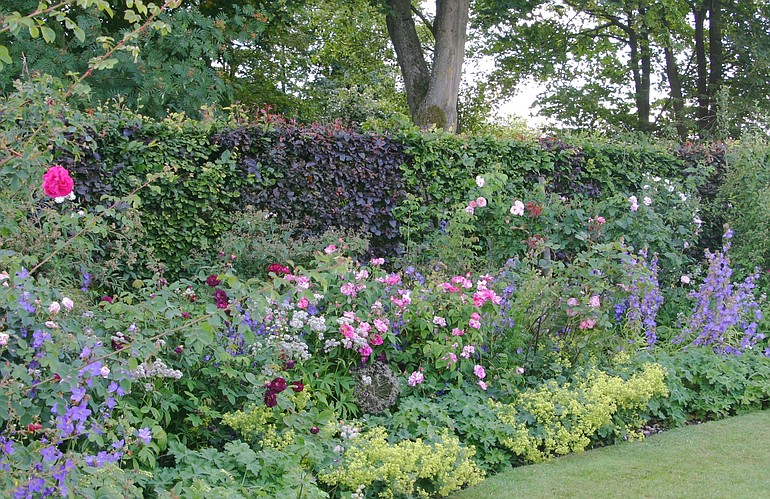It’s showtime in the perennial flower border. The Oriental poppies, pink and blue pincushion flowers, bleeding hearts and hardy geraniums are all vying for center stage and each plant is striving to be better than the year before. A successful perennial border is just one reward for being the director of your personal garden show.
Perennials are nonwoody plants that come back in the garden year after year. Unlike annuals, most of the perennials we plant are hardy. Hardiness is a reference to a plant’s ability to survive the coldest weather of a specific location. In the Southwest Washington garden, hardy perennials typically die to the ground over winter. The plant goes dormant but remains alive and will return bigger and stronger with each new spring.
All perennials have a minimum life span of at least two years, but after that, the longevity rate varies. The bearded Iris will return for many years but must be divided and replanted as older parts of the plant die out. The peony can grace a garden for many generations to come.
A few of the large variety tulip bulbs are advertised and sold as perennial bulbs. Many people buy them in hopes of not having to add new tulips to the garden every year. In my experience, that label is viable only under perfect garden conditions and even then they rarely return for more than two or three years before they lose the ability to regenerate flower blooms in spring.
Every gardener has a different idea of the perfect perennial garden. Just as some prefer light opera to country music, a gardener may prefer the blowzy, full-blown look of an English flower border to the sparse suburban penchant for individual plants floating in a sea of bark dust. The wonderful twist to this garden story is that many of the same plants can pull off entirely different garden styles.
The tall, flower-laden stalks of delphiniums, rising up in spires of blue, pink or pure white florets, adapt well to a number of garden styles. Amid a gathering of colored perennials, the delphinium adds stature and grace to many plant combinations. In large clusters of 10, 15 or even 25, backed by an evergreen backdrop, the look is rich and abundantly generous.
In general, perennials prefer soil that is well drained and amended with organic matter. There are perennials for every level of sun exposure. The bright yellow coreopsis will bloom throughout the growing season in full sun if deadheaded as each flush of bloom fades. The equally vibrant Ligularia “The Rocket” can take only tempered sunlight in the morning and evening. These plants would fall over in a faint if made to face the noonday sun.
Easy-going daylilies start to bloom this month. Their upright sprays of garden green leaves emerged a month ago to fill out the early spring flower border. As much as we adore the blossoms of our perennials, the value of a plant’s foliage is paramount to the success of a finished garden look. A plant’s flowers come and go as fleetingly as a celebrity’s star power. The texture of an established garden relies on more than colorful bloom alone.
Many perennials are grown specifically for their interesting foliage. The hosta, beloved by gardeners and slugs alike, can carry a shady border through the growing season with a delightful array of leaf color, texture and form. The variegated hosta “Francee” and “Patriot” add light to dark areas of the garden.
The leaves of hosta “Sum and Substance” and “Inniswood” will actually develop richer leaf color if they receive a smattering of sunlight through part of the day. To lighten the look of shady areas of the garden, add silver- or golden-leafed plants such as Lamium “Beacon Silver” or “Aurea.” The mottled markings on the leaves of pulmonaria stand out in dappled shade. Try these at the foot of a Douglas fir where little else will grow.
All perennials look their best with regular maintenance during the growing season. Deadhead spent flowers to keep the garden looking neat and to prolong bloom. Above all, choose a wide variety of plants that help express your personal take on the garden. The Shasta daisy reminds us that simplicity can satisfy the soul. The Japanese anemone is grace personified. Once established, these stars of the flower border return each year to revive their 15 minutes of fame.
Robb Rosser is a WSU-certified Master Gardener. Reach him at Write2Robb@aol.com.



